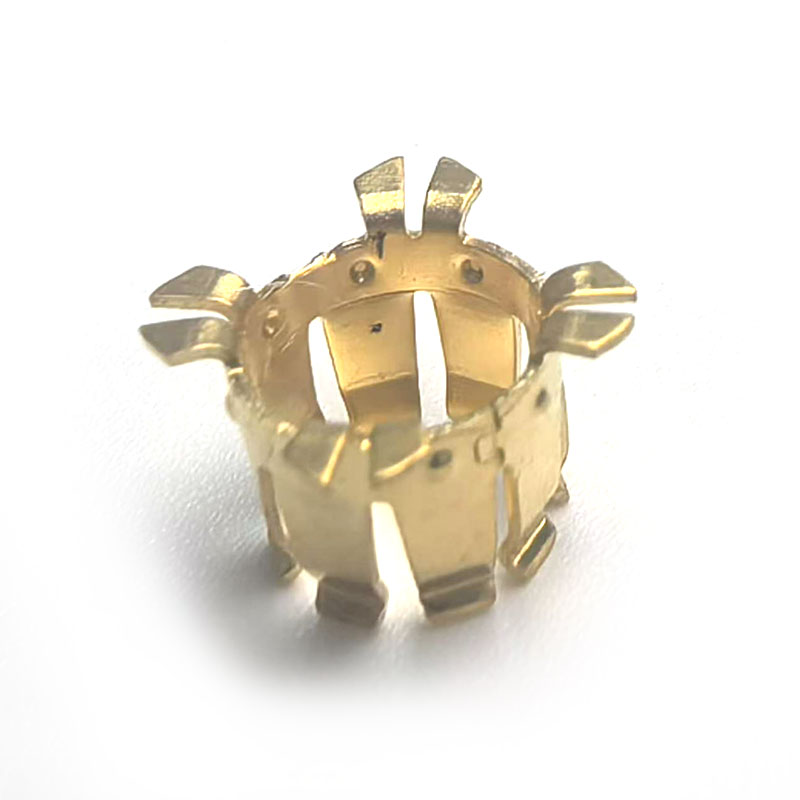Why Is Metal Stamping a Cornerstone of Modern Manufacturing?
2025-08-05
In the intricate web of modern manufacturing, where precision, efficiency, and scalability determine market leadership, certain processes stand out as foundational. Metal stamping, a technique that transforms raw metal into intricate components, is one such process. From the smallest electrical connectors in smartphones to the large structural parts in automotive assemblies, metal-stamped components are omnipresent, yet their role often goes unnoticed by the end consumer. For manufacturers, however, the choice of metal stamping as a production method is rarely accidental. It’s a strategic decision rooted in the process’s ability to deliver high-volume, consistent, and cost-effective parts—qualities that have made it indispensable across industries like automotive, aerospace, electronics, and medical devices.
Trending News Headlines: Top Stories on Metal Stamping
- "Automotive Metal Stamping Parts See 35% Demand Surge Amid EV Production Boom"
- "Precision Metal Stamping Cuts Electronics Component Costs by 20% in Q3"
- "Sustainable Metal Stamping Processes Reduce Carbon Footprint by 18%"
What Is Metal Stamping and How Does It Work?
Key Advantages of Metal Stamping
Unmatched Production Speed and Volume
In industries where mass production is the norm—such as automotive and electronics—speed and scalability are paramount. Metal stamping delivers on both fronts, with modern presses capable of producing hundreds to thousands of parts per hour. Progressive stamping lines, in particular, excel in high-volume scenarios, with cycle times as low as 0.5 seconds per part for small components. This speed translates to shorter lead times, allowing manufacturers to meet tight deadlines and respond quickly to market demand fluctuations. For example, an automotive supplier using metal stamping can produce over 1 million door latch components per month, ensuring timely delivery to assembly lines.
Superior Precision and Consistency
Precision is non-negotiable in industries like aerospace and medical devices, where even a minor dimensional error can compromise performance or safety. Metal stamping achieves tolerances as tight as ±0.001 inches, thanks to advanced die design and press control systems. The use of hardened tool steel dies ensures that each part is identical to the last, even after millions of cycles. This consistency eliminates the need for costly post-production inspections and reduces scrap rates, which is especially critical when working with expensive materials like titanium or stainless steel.
Cost Efficiency in High-Volume Production
While the initial investment in dies and presses can be significant, metal stamping becomes highly cost-effective for large production runs. The per-unit cost decreases as volume increases, thanks to minimal material waste and reduced labor requirements. Unlike machining, which removes material to shape a part (resulting in up to 30% waste), stamping reshapes the metal with minimal scrap—typically less than 5% for optimized processes. Additionally, automated stamping lines require fewer operators than manual assembly or machining processes, further lowering labor costs over time.
Versatility Across Materials and Designs
Metal stamping is compatible with a wide range of metals, from thin-gauge aluminum (0.001 inches thick) to thick steel plates (up to 0.25 inches), making it suitable for diverse applications. It can produce simple parts like washers and brackets as well as complex, multi-featured components with bends, embossments, and threaded holes. This versatility allows manufacturers to consolidate multiple parts into a single stamped component, reducing assembly time and improving product reliability. For example, a single stamped electrical connector can replace three separately machined parts, streamlining production and lowering costs.
Enhanced Material Properties
The cold-forming nature of metal stamping work-hardens the material, increasing its tensile strength and fatigue resistance compared to hot-formed or machined parts. This improvement in mechanical properties is particularly valuable for components subjected to stress, such as automotive suspension parts or aerospace fasteners. Additionally, stamping preserves the material’s grain structure, ensuring uniform strength across the part and reducing the risk of failure under load.
Our Metal Stamping Machine Specifications
|
Parameter
|
Specification
|
|
Press Capacity
|
800 tons
|
|
Stamping Speed
|
30 – 120 strokes per minute (adjustable)
|
|
Maximum Material Thickness
|
6 mm (steel), 8 mm (aluminum)
|
|
Minimum Material Thickness
|
0.1 mm
|
|
Maximum Workpiece Size
|
600 × 400 mm
|
|
Die Height Adjustment Range
|
200 – 500 mm
|
|
Bed Area
|
1200 × 800 mm
|
|
Power Consumption
|
75 kW
|
|
Control System
|
PLC with 10-inch touchscreen; stores 100+ production recipes
|
|
Automation Compatibility
|
Integrates with coil feeders, robots, and inspection systems
|
|
Safety Features
|
Light curtain guards, emergency stop buttons, overload protection
|
|
Dimensions (L × W × H)
|
3500 × 2200 × 3800 mm
|
|
Weight
|
28,000 kg
|
FAQ: Common Questions About Metal Stamping
A: The lifespan of a metal stamping die depends on the material being stamped, the complexity of the part, and the die’s construction material. High-quality dies made from hardened tool steel can last anywhere from 100,000 to over 10 million cycles when used with low-carbon steel. Dies used for stamping abrasive materials like stainless steel may have shorter lifespans, typically 50,000 to 500,000 cycles. Regular maintenance is critical to maximizing die life, including cleaning to remove metal debris, lubrication of moving parts, and inspection for wear or damage after each production run. Our service team offers die maintenance programs, including sharpening, reconditioning, and replacement of worn components, to ensure consistent performance and extend die life.



